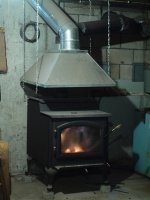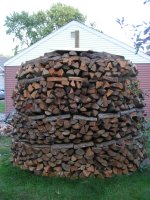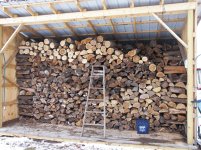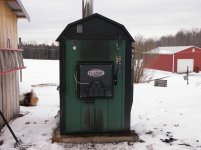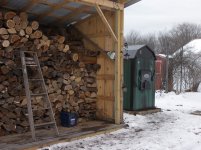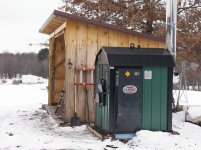arrow
Super Member
As I am a nuts and bolt type, my first thread got me to thinking about actual circumstances that may begin to depict wood burning efficiencies better than statistics. It seems that the sq footage capacity of any given stove are measured in South Carolina someplace ( or so the guy who sold me my stove states) so real life conditions are for me, a better marker. I live in a New England state where we get about 5 to 6000 heating degree days or thereabouts. I have a Quadrafire wood stove which is an epa certified air tube type stove. It is the largest they make (5700) stated to heat over 3000sq ft. I burn mostly oak and start in Oct and go through April. It is my main heating source. After successive 25* days, I must supplement wood heat with the oil burner to keep house between 68-70*. I live in a drafty 2 floor 1800 sq ft log home. The stove is in the cellar. I use about 5 cords per year and have gone through about 4 already. Shoulder months require only 1 load at night and then rebuilding a fire the next night. The hood has helped immensely as this stove has a heat shield on it and most of its heat convects upward. The stove may heat 3000sq ft in S.C. but it barely keeps up here at 1800 sq ft heating 3 floors. The house never gets below 60* even when its 0 outside but this is when we wake up. The stove alone could never get the house up to 68* at these temps. I use 1 tank of oil (275 gal.) per year and a half to mostly heat hot water. Now please understand, I am not trying to brag here as I do not even know just what constitutes "good" or any other marker of efficiency. My usage may suck in comparison to others but in order to rightfully compare this thing, there are certain details that must be given accurately. So, if you are so inclined, what make and type and placement is your stove? how big is your place you are heating, how well insulated is it? where are you? and how much and what type wood do you use?
